The Governance of The TRON Ecosystem - Crypto Academy / S4W7 - Homework Post for @yohan2on
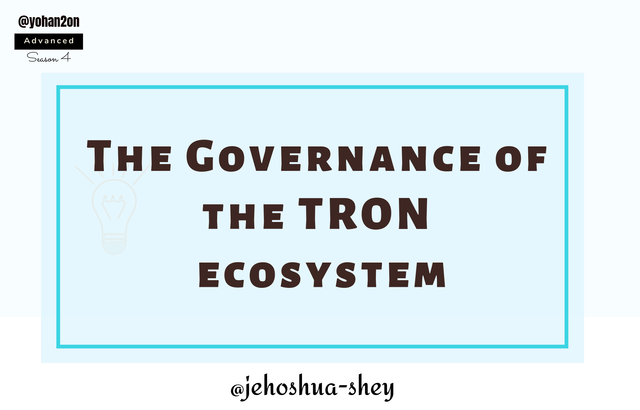

Q.1. Who are Super Representatives, SR partners and SR candidates? (The Governance of the TRON Ecosystem)

The TRON blockchain employs a modified version of Proof of Stake (PoS) consensus mechanism. PoS stipulated that people who had staked more tokens can be bookkeepers or miners. This had some draw backs as the stakeholders with the most stake could be less desirable than other stakeholders with less stake.
TRON adopted the Delegated Proof of Stake (DPoS) consensus which slightly modified the PoS by delegating the bookkeeping or mining duties to elected individuals who must have already staked tokens to qualify to be elected.
On TRON blockchain, these elected bookkeepers or miners are called Super Representatives. As bookkeepers or miners, Super Representatives validates Transactions and produce blocks and in turn, earn block producer rewards. The TRON blockchain employs 27 of these Super Representatives and they are chosen through a voting process.
THE VOTING PROCESS
In this voting process, TRON users who stake their TRON can participate in voting for the Super Representatives while they can also contest as candidates to be voted for.
The voting is done in rounds and each rounds lasts for 6 hours. This means every 6 hours, a round of voting is completed and new set of Super Representatives are elected. Each set of Super Representatives is supported by a set of Super Representatives Partners who are also chosen from the voting process.
On the TRON blockchain, a block is created every 3 seconds. Hence, the 6 hours making up a round contains about 7200 slots of 3 seconds.

Image Credit
The last 3 slots in a round is not used to complete blocks but to count the votes during the round, decide the elected Super Representatives and allocate to slots of the next round to them. Each Super Representative is to produce blocks during their own slots.
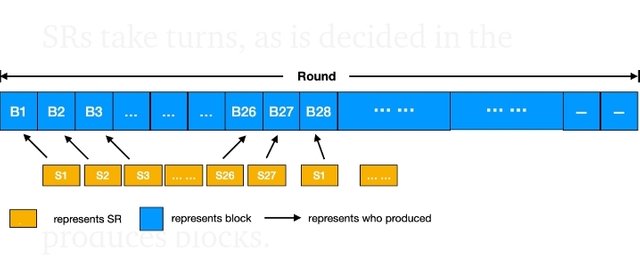
Image Credit
This election is contested by 127 different individuals/entities who must have staked their TRON and they are known as Super Representatives Candidates. Of this number, the top 27 by vote count become the Super Representatives while the rest are referred to as the Super Representatives Partners.
On the TRON blockchain, each completed block contains 16 TRX as voting rewards and 32 TRX as block rewards. Only the Super Representatives receive block rewards while all the candidates including the Super Representatives and the Super Representatives Partners receive voting rewards.
IN A NUT SHELL
A Super Representative Candidate (SRC) on the TRON blockchain is an individual/group of individuals/organization with a TRON account who stakes their TRON and contest to be a Super Representative. There are 127 SRCs selected for each voting round.
A Super Representative is a Candidate who makes it into the top 27 after a voting round. They're allocated slots to produce blocks and are the bookkeepers of the TRON blockchain. They alone are entitled to block rewards and they also share in the voting rewards. Their tenure lasts one voting round i.e 6 hours, after which a new set of Super Representatives are elected.
A Super Representative Partner is a Super Representative Candidate who couldn't make it into the top 27. As a result, they're not entitled to produce any blocks. However, because they contested in the first place, the blockchain allows them to share in the voting rewards produce in each block. Their candidacy expires lasts for the next round (6 hours) after the election.

Q.2. What’s the difference between DPOS and POS consensus mechanisms?

This difference stated below highlights on the disparity and does not attempt to arrogate superiority to any of the Consensus mechanisms. Both Proof of Stake and Delegated Proof of Stake have their advantages as well as disadvantages. They both offer a less environment polluting alternative to Proof of Work and both have security issues.
Below are listed, various differences between the Proof of Stake consensus mechanism and the Delegated Proof of Stake consensus mechanism.
1. Block Production Criteria:
Proof of Stake: For the Proof of Stake consensus mechanism, a user only needs to stake their coins in their wallets to contribute and participate in the production of blocks. The more coins a user stakes, the more chance they have of producing a block.
Delegated Proof of Stake: For the Delegated Proof of Stake consensus mechanism, a user has to stake coins in their wallet, then apply for candidacy and contest in an election to win the right to produce blocks. Any other user who has tokens staked has the right to vote for who gets the delegated role of producing blocks.
2. Security threat:
Proof of Stake: For Proof of Stake, the security threat to the network is called a 51% attack. This happens when an individual or a group of individuals hold up to 51% of the coins in circulation and stake them to produce block. They typically hold more than have of the producing power and this become the majority. They can execute some malicious acts on the network is this case.
Delegated Proof of Stake: For Delegated Proof of Stake, the security threat stems from the fact that delegates can form cartels and these cartels can execute malicious attacks. Also, not so many token holders care about the governance of the network and so don't bother to vote. This means that a very small number of users do the voting and decide what happens on the blockchain.
3. Decentralization threat:
Proof of Stake: For Proof of Stake consensus, the more coins a user has, the more influence and ability to produce blocks. Users with very huge stake on the network coming together can form cartels and influence the network like in a centralized system
Delegated Proof of Stake: For Delegated Proof of Stake consensus, decentralization threat exists in the formation of cartels by user who have won the delegated rights to produce blocks. These users can exact an influence on the network like in a centralized system.
4. Throughput:
Delegated Proof of Stake systems are usually faster than Proof of Stake systems. Delegated Proof of Stake allows block producers to produce blocks very quickly. Blockchains like TRON boasts of 1 block every 3 seconds.
5. Energy Consumption:
While Proof of Stake consumes less energy than Proof of Work, it actually consumes more energy than Delegated Proof of Stake. Delegated Proof of Stake requires the list energy to function.
6. Byzantine Fault Repulsion (Security):
Byzantine Fault is a malicious attempt by a node which is supposed to be a miner node or a block producer.
Proof of Stake: For Proof of Stake consensus, a user will have to possess 51% of the stake in order to carry out an attack on the system. This is theoretical as it's not economical to spend much resources acquiring 51% of the coins just to carry out a malicious attack.
Delegated Proof of Stake: For Delegated Proof of Stake consensus, users can vote out a block producer who is malicious. The block producers are elected by other users. This means they try their best to be honest to as to retain their delegation. This election is done frequently. On the TRON blockchain, it is done every 6 hours.

Q.3. Write a Step by Step tutorial showcasing how to stake/freeze TRX and vote for SRs

This is how to freeze TRX and vote for SRs. This tutorial involves a TronLink wallet. Below are the following steps.
- Open the TronLink wallet and click on freeze as shown in the image below to freeze TRX
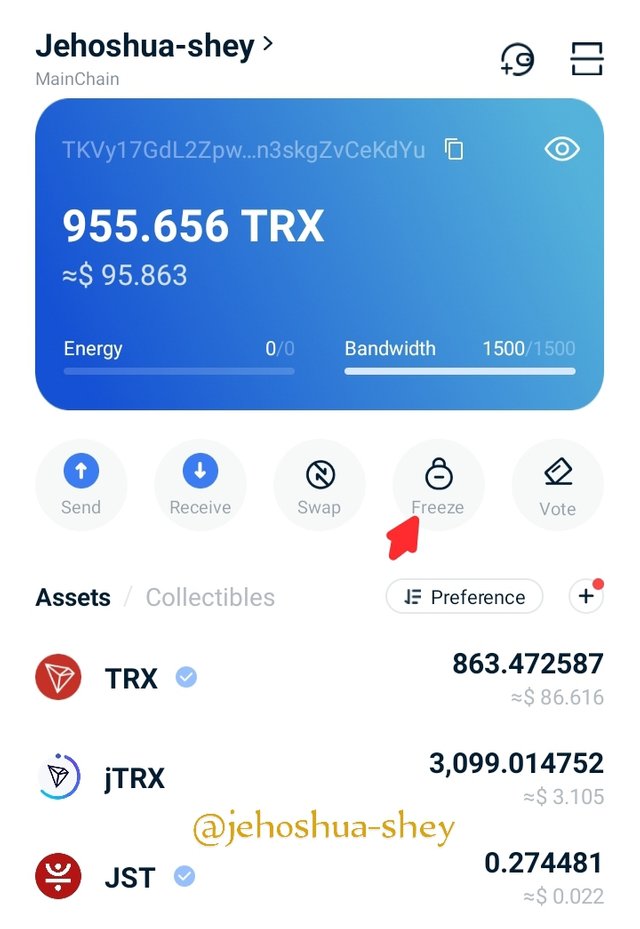
- Next, select what you're freeze for (for vote, you need bandwidth) then enter the amount you want to freeze and click on freeze. Note that the amount of TRX frozen = amount of votes.
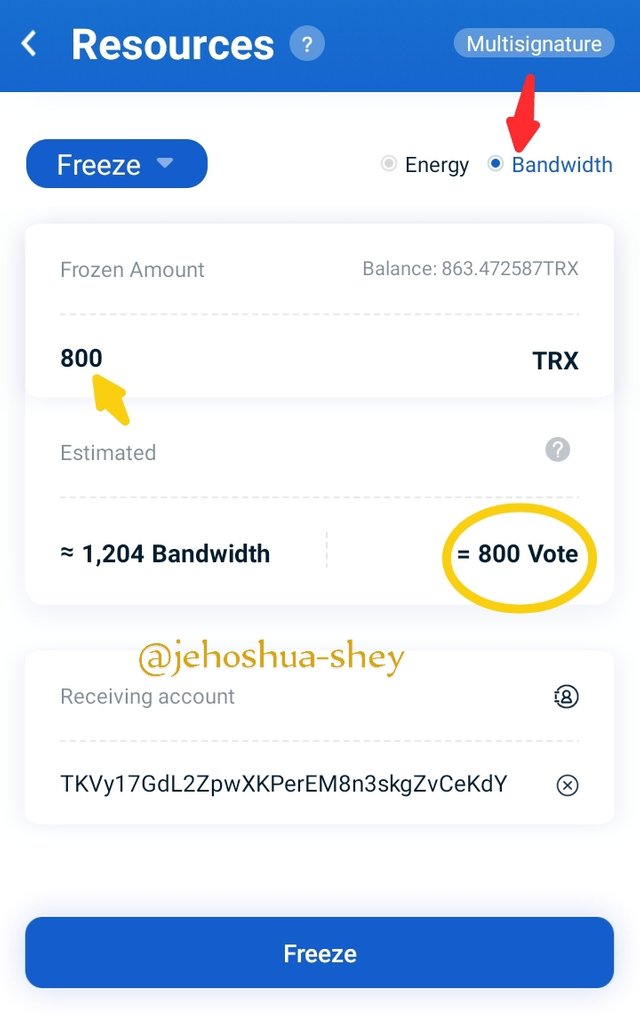
- Confirm the transaction
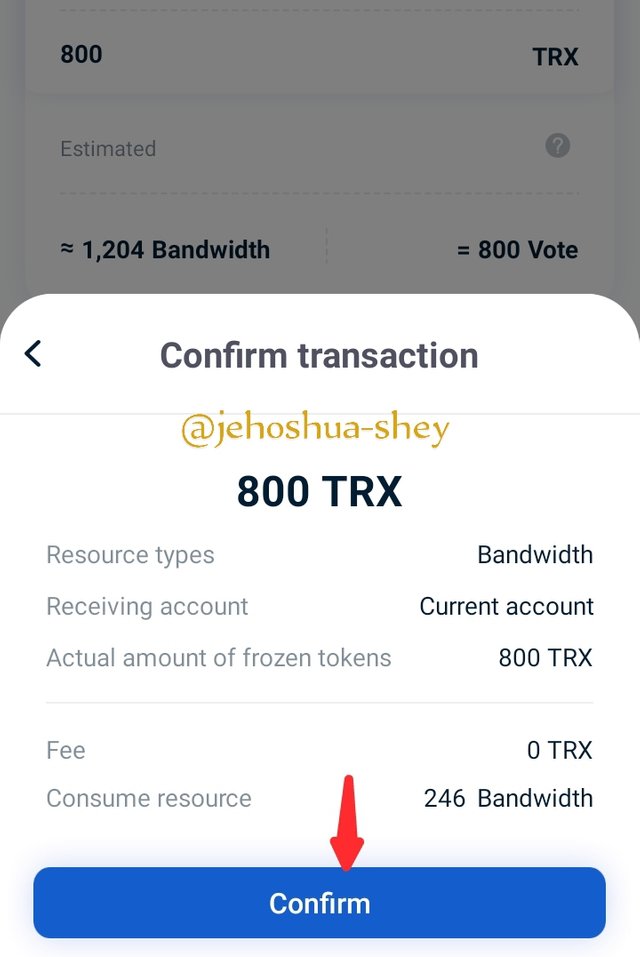
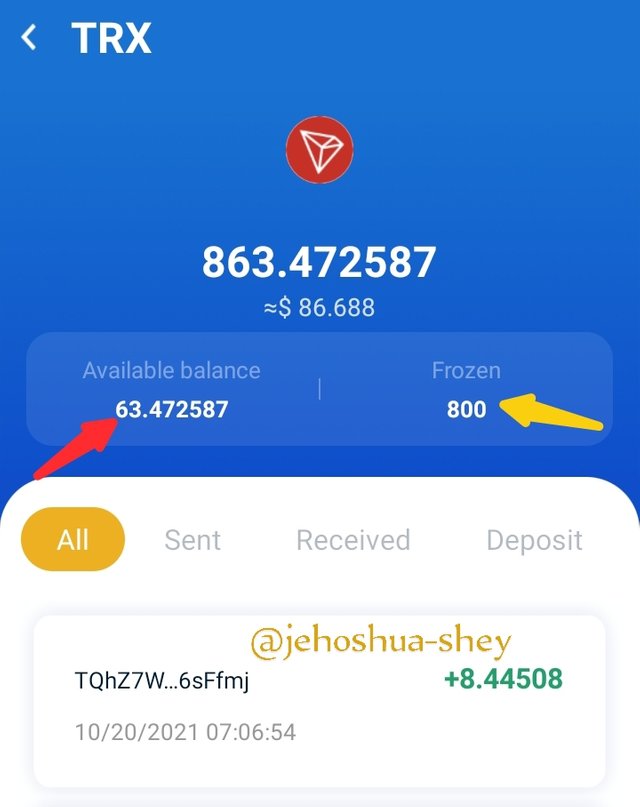
- Hence we're done freezing tokens, let's now go to vote. On the wallet home page, click on vote.

- I'll like to rearrange the SRs according to their toes so as to Select the best for me, so I reorder the arrangement.
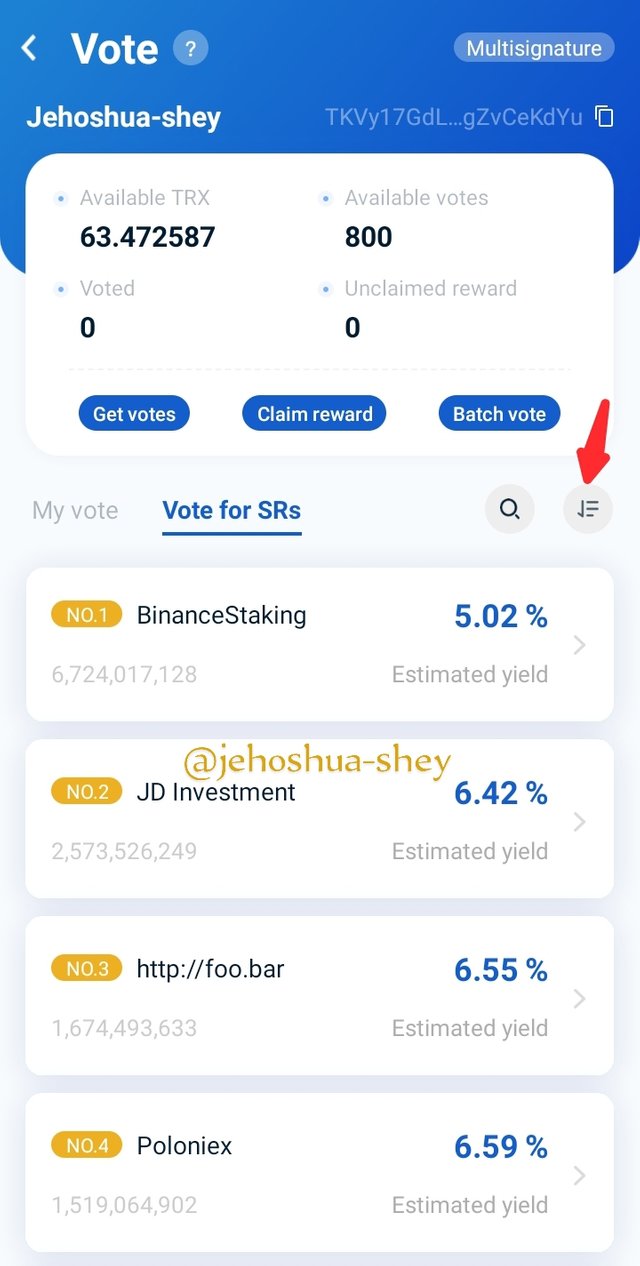

- Now it has been rearranged, I decided to vote for BitGuild. I click on this SR
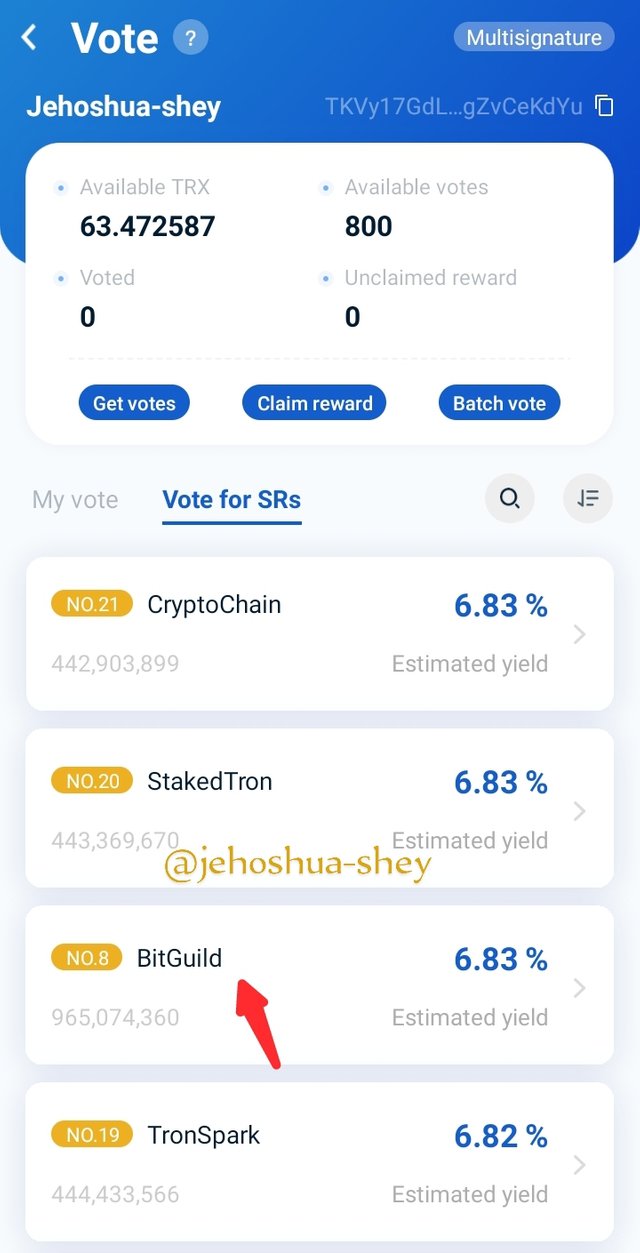
- Next, I click on vote to vote for them
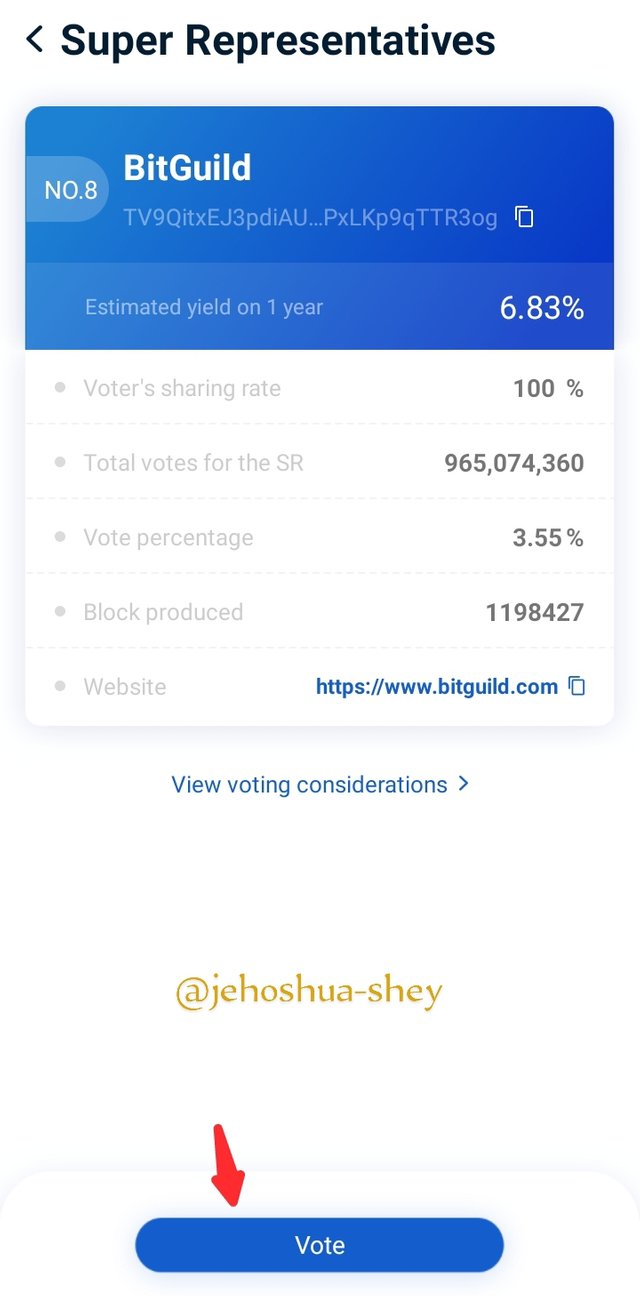
- When voting, I have to set the amount of vote, I decided to set mine to the maximum (800). When I'm done, I click on Vote.
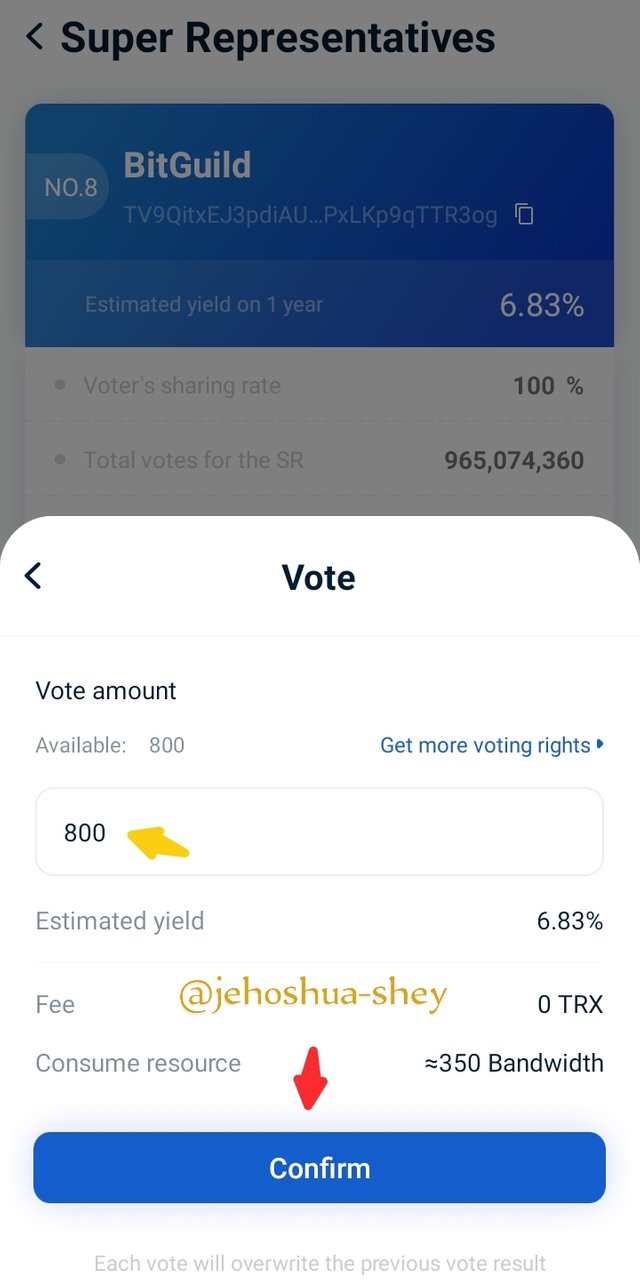
- I have successfully voted for BitGuild with a total of 800 votes, generated from the 800 TRX I froze.
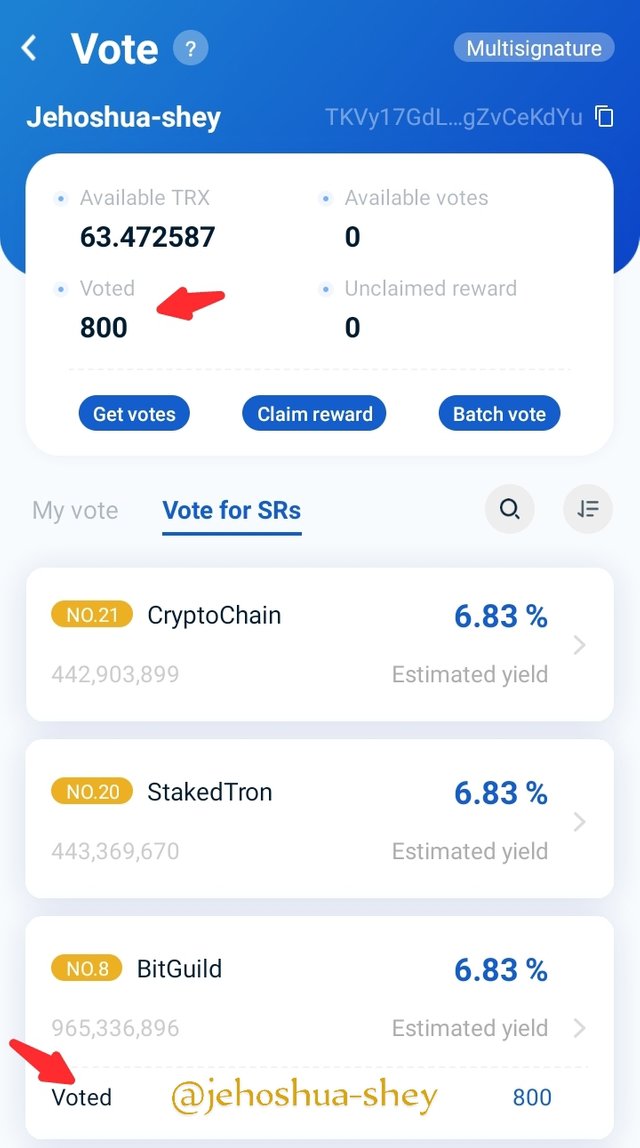

CONCLUSION

DPoS was introduced as there seems to be a need to affect the user's who have the ability to produce blocks while maintaining the staking principle for its immense benefits. While the DPoS may not be a totally superior alternative to PoS, it boasts a higher throughput and a lower energy consumption.
Blockchains like TRON ploys the DPoS, where 27 Super Representatives are elected from an initial 127 Super Representative Candidate. These candidates can be voted for by any TRON holder and this process was clearly shown using a TronLink wallet.
Thanks for reading.
Cc:
@yohan2on
Hello @jehoshua-shey,
Thank you for participating in the 7th Week Crypto Course in its 4th season and for your efforts to complete the suggested tasks, you deserve a Total|8.5/10 rating, according to the following scale:
My review :
A good article in which you were able to answer most of the questions ably, and you have some notes that I made.
A satisfactory explanation of the differences between the functioning of the two mechanisms could have been further explained by means of an illustration.
As for the last question, you have succeeded in explaining and following the stages of freezing and voting for SR.
Thanks again for your effort, and we look forward to reading your next work.
Sincerely,@kouba01